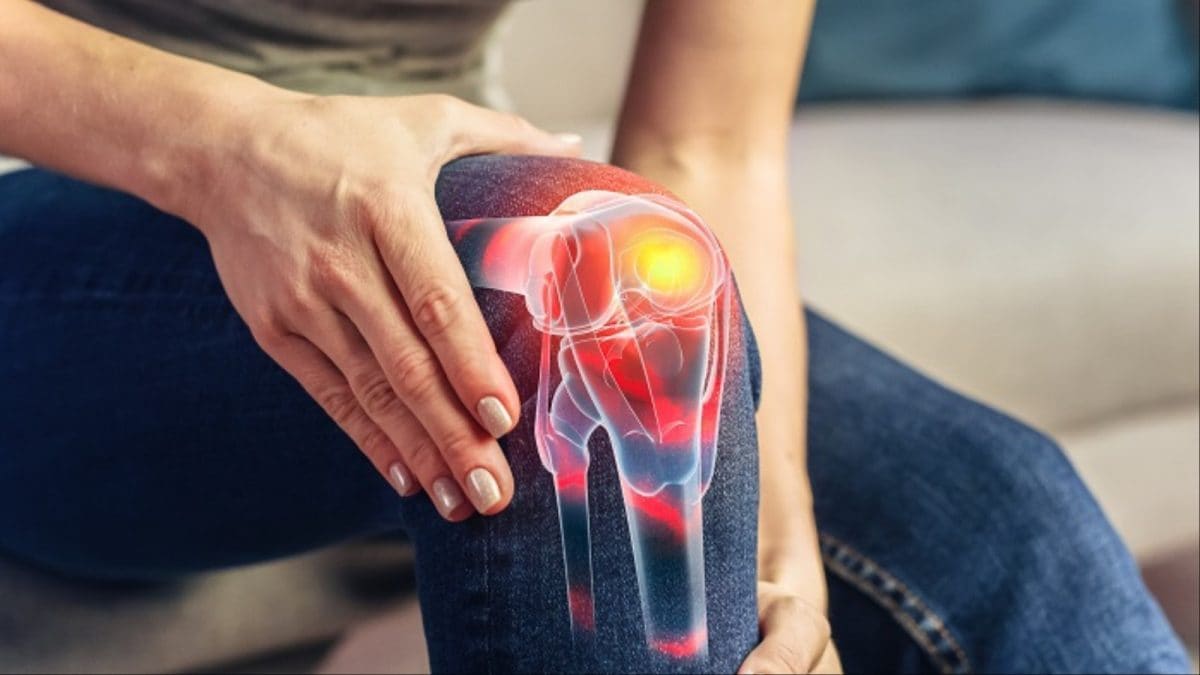The ‘Rusty Hinge’ Feeling: What It Really Means About Your Knees

Last Updated:July 13, 2025, 07:35 IST
The “rusty hinge” feeling shouldn’t be dismissed as a normal part of aging
Rusty hinge feeling: It typically shows up when getting out of bed, climbing stairs, or standing after sitting for long periods.
That old “rusty hinge” sensation in the knees characterized by stiffness, minor grinding, or soreness during movement might not seem like a big deal. It typically shows up when getting out of bed, climbing stairs, or standing after sitting for long periods. But this sensation isn’t just a sign of aging joints; it’s your body’s way of warning you about the possibility of early degenerative changes in the knees.
Dr. Mayank Pathak, Consultant, Orthopaedics, Manipal Hospitals, Kharadi, Pune, explains everything you need to know.
What’s Really Happening Inside Your Knee?
The knee is a complex joint made up of bones, cartilage, ligaments, and fluid-filled sacs called bursae. It supports movement and absorbs impact but when any of these components begin to deteriorate or become inflamed, movement can feel restricted, stiff, or even painful. This sensation is often likened to the sluggish, squeaky, and hesitant motion of a rusty hinge.
One of the most common culprits is early osteoarthritis the gradual wear and tear of cartilage. Other potential causes include early meniscus deterioration or inflammation of the synovial membrane.
Contributing factors often include:
Excess body weight
A sedentary lifestyle
Previous knee injuries
Age-related wear and tear
Repetitive strain from frequent use
In younger individuals, muscle imbalances or postural issues
Why You Shouldn’t Ignore the Rusty Hinge Sensation
Ignoring this feeling may lead to further tissue damage, reduced mobility, chronic knee discomfort, and swelling. Fortunately, with early diagnosis and proper treatment, it’s possible to preserve joint function and delay or even avoid long-term complications.
An orthopedic evaluation usually involves a physical exam, X-rays, and/or MRI scans to assess the condition of the cartilage and soft tissues.
Treatment Options: From Conservative to Cutting-Edge
In the early stages, conservative approaches often yield good results:
Medications to reduce pain and inflammation
Physiotherapy to strengthen the muscles around the joint
Lifestyle changes, such as weight management and joint-friendly physical activity
Nutritional supplements like glucosamine, chondroitin, or collagen may also support joint health.
For patients with more severe symptoms, treatments like hyaluronic acid injections or platelet-rich plasma (PRP) therapy can help lubricate the joint and reduce inflammation.
In advanced cases where there is significant cartilage loss or mechanical issues — minimally invasive procedures such as knee arthroscopy or partial joint replacement may be necessary. A notable innovation in this area is robotic-assisted surgery, which enhances precision, alignment, and recovery outcomes.
Listen to Your Body
The “rusty hinge” feeling shouldn’t be dismissed as a normal part of aging. It’s your body signaling that the joint is under stress. With early intervention, supportive care, and professional guidance, it’s entirely possible to protect your knees and maintain joint health well into your senior years.

Swati Chaturvedi, a seasoned media and journalism aficionado with over 10 years of expertise, is not just a storyteller; she’s a weaver of wit and wisdom in the digital landscape. As a key figure in News18 Engl…Read More
Swati Chaturvedi, a seasoned media and journalism aficionado with over 10 years of expertise, is not just a storyteller; she’s a weaver of wit and wisdom in the digital landscape. As a key figure in News18 Engl… Read More
view comments
- First Published:
[title_words_as_hashtags




